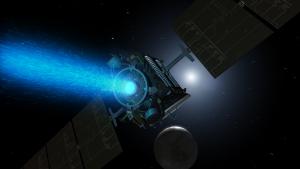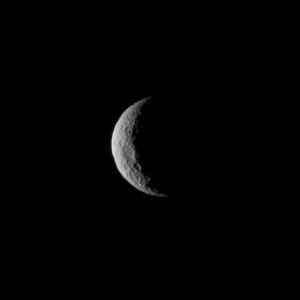
Public Stargazing
- Where:
- Frosty Drew Observatory
- When:
- Friday March 6, 2015 at 6:30 p.m.
- Cost:
- $1 Suggested Donation per Person
Tonight's forecast is calling for clear skies becoming cloudy overnight with temps dropping into the teens, somewhat warmer compared to the usual Friday standard this winter. Additionally, the Moon will be 99% full, just one day into its waning gibbous phase, and will be with us all night long. Last night's full Moon, though bright, was the smallest and furthest full Moon of the year. The super bright Moon, post-winter-storm conditions, and increasing clouds will make for a rather sub-optimal night of stargazing, though views will surely be had.
We plan to open the Observatory and Sky Theatre at 6:30 p.m. In the Observatory, telescopes will feature the super bright Moon, Venus, and Jupiter. In the Sky Theatre, temperatures will be warm with slide shows of astrophotos shot at Frosty Drew on display. On nights with a bright Moon we usually close up around 11:00 p.m., add in the increasing clouds and we can expect to close up around that time tonight. Follow @FrostyDrewOBSY on Twitter or Facebook for updates from the Observatory. We post a “Closing up” tweet when we decide to start our break down operations.
Though the Moon is bright and the snow is deep, views should be good until after 9:00 p.m., when clouds begin to move in. Temperatures and winter conditions require adequate respect! Hats, boots, gloves, and parka are a requirement for fun tonight. So swing on by for some excellent views of Jupiter, the bright Moon, and Venus (during twilight) and get your geek on at the only Rhode Island observatory open during this killer New England winter!
-------------------------------------------------------------------------
Weekly Happenings
Scott MacNeill
At 7:39 a.m. EST this morning (March 6, 2015), the NASA Dawn spacecraft; which has been navigating the Asteroid Belt for the past 3.5 years, successfully acquired orbit around the closest dwarf planet to Earth, Ceres. Like the common story goes, the Dawn mission is a mission of firsts. Though history was totally made, again, this morning; the adventure is just getting started at Ceres with a series of mapping altitude adjustments planned over the next 9 months.
The Dawn mission controllers at NASA JPL (Jet Propulsion Laboratory) received a signal from Dawn at 8:36 a.m. EST this morning, informing mission control that the spacecraft was functioning properly and had engaged its ion propulsion engine. This indicated that Dawn had successfully entered the planned orbital pattern. Orbit was acquired at 7:39 a.m. EST at near 38,000 miles distant from Ceres when Dawn was captured by the dwarf planet's gravity.
If all this is not awesome enough, the science is about to get a whole lot better. Dawn will now assume a polar orbit around Ceres at an altitude of 8,388 miles and begin collecting images and sensor measurements. Once complete, Dawn will drop to a new survey altitude of 2,753 miles where global imagery will be collected as well as infrared mapping. In August, Dawn will spiral down to an altitude of 920 miles where additional visible and infrared mapping will continue at higher resolution. Additionally, 3D surface mapping will commence. Dawn will continue to descend further in altitude, eventually achieving a close orbit in November 2015 at 233 miles distant, where gamma-ray, neutron detection and gravity investigation will take place.
The Dawn mission has performed many historic tasks and has rightfully earned its place as an extremely successful mission of firsts. Dawn is now the first spacecraft to achieve orbit around a dwarf planet. It is the first mission to successfully orbit two separate extraterrestrial objects and the first mission to orbit protoplanet Vesta. Add in that it is first mission to orbit dwarf planet Ceres, and we have a real rock star piece of engineering!
Unfortunately, two of Dawn's reaction wheels are malfunctioning, just like the Kepler mission. Reaction wheels are responsible for maintaining attitude control and making minor attitude adjustments without the need to use hydrazine, a low power propellant for maneuvering thrusters. Since Dawn's reaction wheels are malfunctioning, hydrazine will be required to maintain and adjust attitude control. This will result in Dawn becoming a permanent satellite of Ceres, with any dreams of a Pallas fly-by becoming unrealistic.
Regardless of the malfunctioning components, Dawn is set to mesmerize yet again as a remarkable mission that done absolutely amazing things! While at Vesta, from 2011 – 2012, Dawn had forever changed our view of the little world, and we can surely expect the same level of amazement over the next year at Ceres. Follow along with the adventure at: http://dawn.jpl.nasa.gov/ and keep an eye out as the images start pouring in. Then give it up for Dawn, one of the most ambitious missions of the decade that has delivered hugely on its prospects!
-Scott


